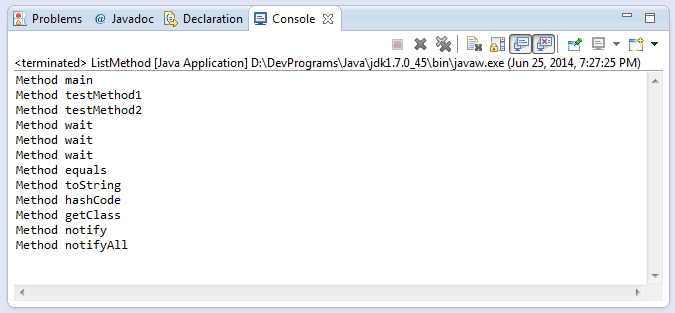

In object-oriented programming languages such as Java, reflection allows inspection of classes, interfaces, fields and methods at runtime without knowing the names of the interfaces, fields, methods at compile time. To solve the above problem one of the approaches is using REFLECTION. Nate Forman works for Ticom Geomatics where he uses reflection in. Failing to do so, may cause the library to crash. In each case, George finds flexible, reflective solutions that replace the usual. T he developers using your library will have to keep in mind that they should initialize all the modules of the library before using it. Modularizing the functionalities simultaneously increases the complexity of integrating the library. Payments: Haptik also offers options to make Payments over its platforms, like “Recharge” for phones operators etc. (If transactions are needed, Payments module needs to be integrated as well)ģ. Travel: along with the basic chat flow the developers can also enable the functionality to make travel bookings using the Haptik UI flow, by integrating the Travel module of Haptik. Core: which will enable the basic chat flows like “Daily Quiz”, “Reminders” etc in the client’s application.Ģ. This allows the developer integrating your library to pick and choose the functionality they want to avail from your library while keeping their application sizes in check.Īt Haptik, we divided the entire SDK into 3 major modules:ġ. Hence, to keep the library size less, it is important to bundle related functionality together while modularizing the other unrelated functionalities. The factor of size restriction becomes worse if you are designing a library, as developers will not want to bloat their application because of the size of your library.
JAVA REFLECTION USE CASE INSTALL
Huge download sizes discourage the users to download and install the application.
JAVA REFLECTION USE CASE ANDROID
Again, this isn’t the only way to go about things, but it’s certainly an efficient way in some cases.When designing an Android Application, one of the important things to remember is the download size of your application. This can be a great way to add or replace functionality of existing classes. I’ve seen another example where somebody wrote a proxy LinkedList class, where you could add objects but not delete them, essentially creating a “write only” LinkedList.

The things you can do with this is almost endless. Java Core Reflection mechanism and bytecode generation, leaving the language and. That’s pretty darn cool, especially because Java let’s us do this without any 3rd party libraries. extensions: the double-dispatch use-case. The handler of whatever is being wrapped, as you can see above BankProxyHandler is the handler for the BankImpl() Public class BankProxyHandler implements InvocationHandler ģ. “InvocationHandler” required by the proxy API. Martin (162), that demonstrates the usefulness of Java Reflections.
JAVA REFLECTION USE CASE CODE
Here’s some excellent example code from, Clean Code, by Robert C. Pros: Inspection of interfaces, classes, methods, and fields during runtime is possible using reflection, even without using their names during the compile time. While the reflection provides a lot of advantages, it has some disadvantages too.

While this should optimally be solved by modifying the field. Java reflection should always be used with caution. Imagine on systems with only a few kilobytes of memory, even the executed code section of a program would have to write to itself to save precious space. A good example of reflections is to get a private field of another class. In fact, polymorphic code in C was quite useful when the program itself could only be a certain size. Yes, you could of course do the calculations by hand and figure out the big-O of the operations and prove a hash map would be more efficient in most cases, hence why this is just a simple example I pulled out of thin air, but what if you don’t know how your user is going to use your program? Self modification might be the only way, especially in embedded systems. Imagine a program that learns through successive runs that a hash map works more efficiently than a list, and then from there on out uses a hash map instead. It is hard to think of exact specific reasons of why you would want to use reflections in Java, but it’s easy to think of abstract reasons. According to this stackoverflow thread, the reason C++ doesn’t have reflections is simply compressed to: it’s a lot of work to implement and they already have template metaprogramming which is deemed “good enough”. C++ does not have a standard reflections library like Java, so it’s a nice feature that might put Java ahead of C++ if you’re choosing which language supports self-modifying code and metaprogramming better. Today I am going to demonstrate some useful ways we can apply Reflections in Java.


 0 kommentar(er)
0 kommentar(er)
